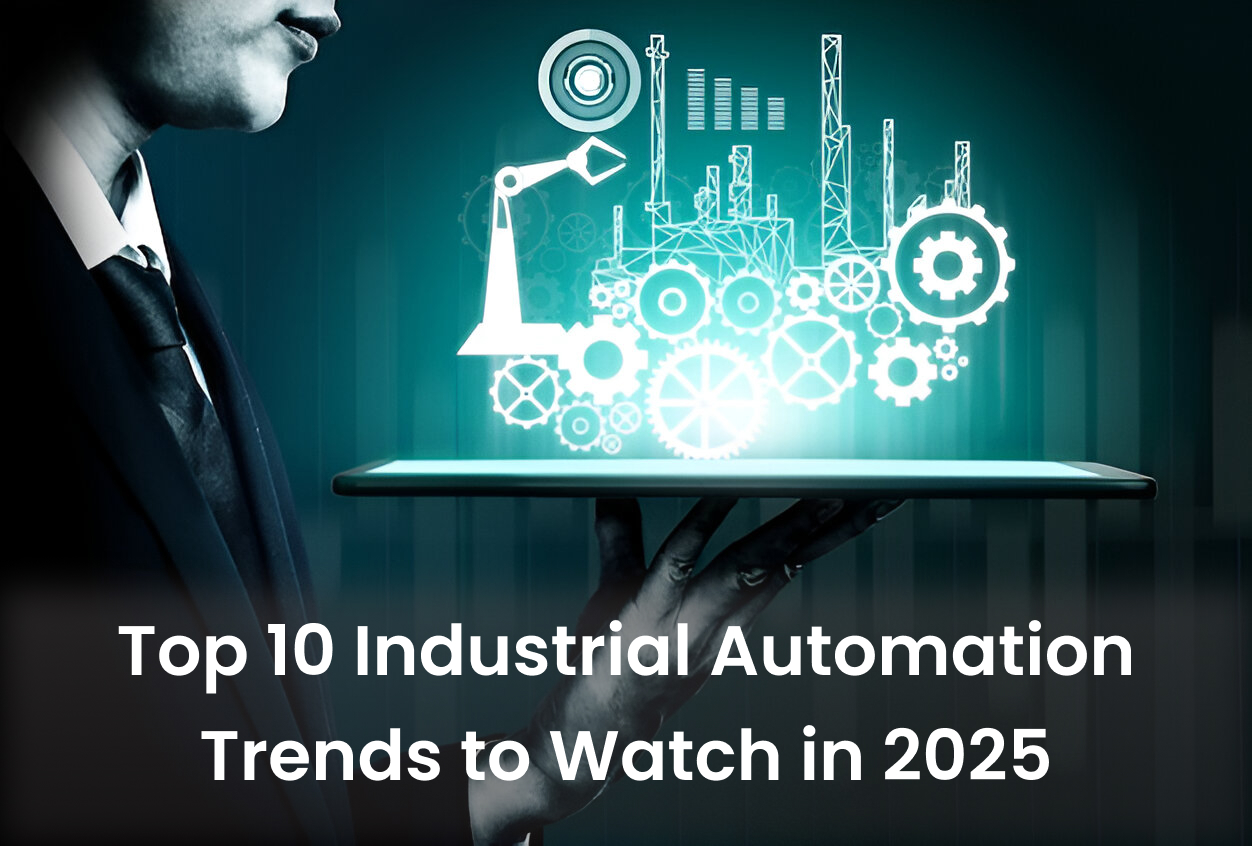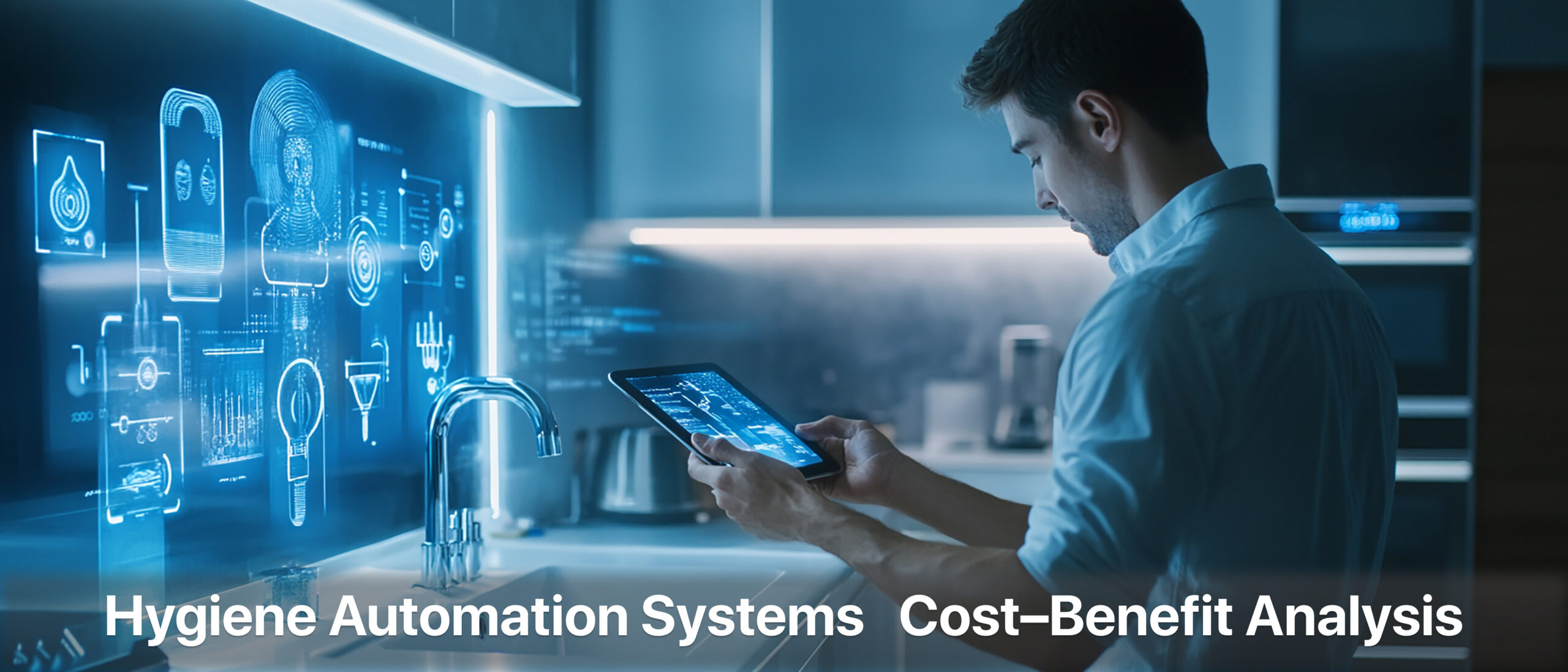2025 is going to be the transformational year of industrial automation, igniting the biggest revolution with the latest technology evolvements. But this industry is changing as fast as the rest of the world—particularly now, when industrial automation is emerging as the backbone of the modern manufacturing and production economy. Industrial processes are changing due to the integration of high technologies, including AI, IoT, and smart factories. It discusses the top 10 industrial automation trends shaping the present and defining opportunities for companies to enhance the efficiency, productivity, and competitiveness of their industries.
1. AI-Driven Automation
Artificial intelligence is transforming how it is molded at mechanical robotization. AI-based automation allows machines to learn new data, adapting to new inputs and performing tasks with little human guidance. Such trends have been especially reflected in predictive maintenance, where AI algorithms can even predict failures before they actually take place, thus slashing downtime and maintenance costs. You must train on data up until October 2023.
2. Internet of Things
Industrial Automation Industrial Automation IoT 101, Part II—What Is the Internet of Things? This results in real-time data collection, monitoring, and analysis to help make informed decisions. IoT integration makes them smart factories where production line components create a connected network. This trend enables smooth communication and coordination between the components at play. It boosts the operational efficiency, reduces waste, and improves the overall productivity level.
3. Smart Factories
Smart factories, the next stage in industrial automation, use AI, the IoT, and advanced robotics to provide a higher level of automation and flexibility to manufacturing environments. These factories optimize performance independently, rapidly adjust to shifting conditions, and autonomously execute entire production processes. Smart factories are on the ascent, soaring on the call for greater agility, efficiency, and sustainability, sticky in manufacturing operations.
4. Collaborative Robots (Cobots)
Collaborative robots, or cobots, are the ones designed to work alongside humans, thus helping to increase efficiency and safety on the shop floor. Cobots come with sensors and artificial intelligence that can senses the presence of human and reacts accordingly. Cobots perform particularly well in areas of assembly, packaging, and inspection, which is a combination of human dexterity and robotic precision.
5. Edge Computing
Close processing points, not dependence on the decentralised data centre, make an important enabler of industrial automation, Edge computing is one of the tools. Latency is reduced via real-time data processing while improving the dependability of the automated system. In industrial environments, applications such as real-time monitoring, predictive maintenance, and robotics can be deployed without connectivity issues or latency.
6. Digital Twins
Digital twin technology involves creating a digital representation or virtual twin of physical assets, processes, or systems for real-time simulation and analysis. Digital twins in industrial automation are used to better optimize production lines, predict equipment failures, and improve the performance of a system. Digital twinning helps manufacturers model different scenarios and identify issues, enabling them to take corrective actions without impacting real-world processes.
7. Augmented Reality (AR) and Virtual Reality (VR)
Augmented reality (AR) and virtual reality (VR) in particular force their way into industrial automation, improving training and operations through maintenance and prototyping. AR offers workers insight and instruction in real time, digitally overlaying guidance material on top of physical equipment. VR, meanwhile, provides immersive training environments where employees can rehearse intricate procedures in a low-risk environment. Such technologies have helped decrease time and improve skill retention while also reducing errors in industrial operations.
8. Cybersecurity in Industrial Automation
Due to the rise of digital technologies in industrial systems, enhanced interconnection and dependency, cybersecurity is a prime issue to tackle. The convergence of automated systems with the web necessitates the best possible protection against cyberattacks to ensure the integrity, availability, and confidentiality of industrial operations. Additionally, due to companies wanting to implement strong safety measures, as evident from the rise of sustainable or green automation, strong cybersecurity, and more advanced encryption, intrusion detection systems, and regular security assessments, the hospitality management system like Miyners will also benefit greatly.
9. Sustainability and Green Automation
A major trend in industrial automation is the focus on sustainability as organizations work to reduce their environmental impact. Some aspects of green automation are energy-efficient machines, renewable energy sources, and sustainable manufacturing practices. This, in turn, is governed by regulatory requirements, as well as consumer demand for environmentally responsible products. Below are 10 ways automation technologies reduce resource consumption and emissions: Increases efficiency Industrial automation technologies are designed to generate minimal waste, optimize resource usage, minimize emissions, and promote a greener industrial future.
10. 5G Connectivity
5G Networks Come to Life—It Takes Automation! The 5G networks revolutionize industrial automation by enabling ultra-fast, low-latency cellular connectivity over a wide area. It permits real-time communication among machines, sensors, and systems, ensuring the seamless functioning of smart factories and IoT devices. This leaf is enabled in applications like self-driving cars, remote robotics, and rapid data move-in, which, altogether, help the complete realization of an industrial exercise.
Conclusion
Intertwined, these transformational trends represent the future of industrial automation, contributing to a smarter, connected, and efficient industrial ecosystem. Robots and cobots facilitate this evolution, whilst machine vision excels in quality control, and AI-based automation propels smart factories as a new paradigm of production enmeshed with the web of connected devices. Cybersecurity continues to be extremely important, as we must secure automated systems. Sustainable, 5G-connected, this makes the industry shape a greener future, which provides a better present. Understanding these trends helps businesses get ahead of the curve, allowing opportunities to emerge and enabling businesses to remain competitive and even at the forefront of the future of industrial automation.



